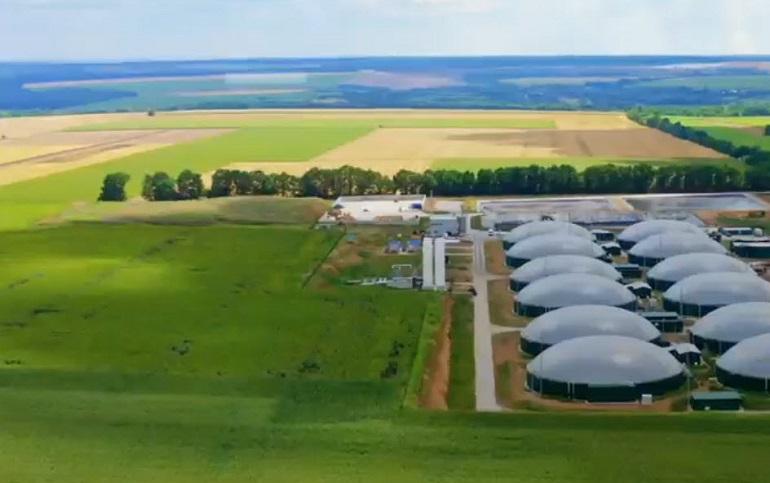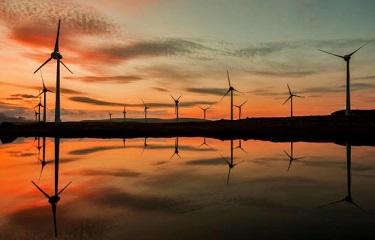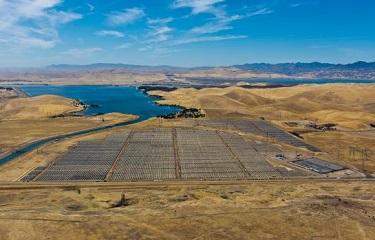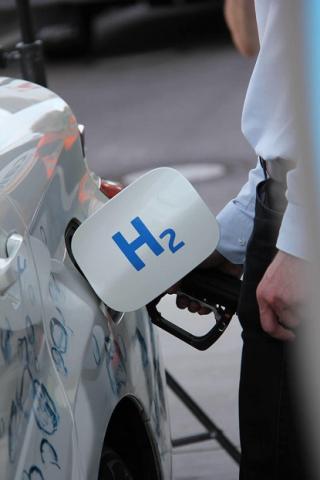Steering Towards A More Complex Marine Fuels Market
Blog Article - May 17, 2021
Total Marine Fuels Private Limited, an affiliate of Total, recently entered into a memorandum of understanding with ITOCHU Corporation and other industry leaders on the joint development study of ammonia as a new marine fuel in Singapore. Having spoken at recent industry events about alternative marine fuels, Frederic Meyer, Director of Strategy at TMFGS, shares his thoughts on what the future marine fuels market could look like and its potential impact on shipping players globally.
As part of a broad energy company, we at Total Marine Fuels Global Solutions (TMFGS) recognize that we have a pivotal role to play in creating sustainable marine fuel solutions. The Company’s investments in multiple low- and zero-carbon fuels are setting the foundations for tomorrow’s marine fuel solutions.

How are we doing this?
In the midst of the 2020 global crisis, Total launched a bold new strategy to transform its profile over the 2020-30 decade with the view to get to Net Zero Emissions in all its activities by 2050, together with society.
As part of this transformation, renewables & electricity and Liquefied Natural Gas (LNG) are the two pillars of Total’s growth in energy production for the coming decade. Already in 2021, in renewables, Total has announced various investment projects including:
- Biogas Production: With the acquisition of Fonroche Biogaz, the French market leader in the production of renewable gas, Total is now a major player in renewable gas in France and Europe. By 2030, Total plans to produce 4 to 6 TWh of biomethane a year.
- Renewable Hydrogen: Total entered into a cooperation agreement with Engie to design, develop, build and operate the Masshylia project, France’s largest renewable hydrogen production site.
- Offshore Wind: Total and the Green Investment Group will develop an offshore wind project located off the UK’s East Anglian coast that could deliver up to 1.5 GW of electricity. This project follows another agreement, announced in September 2020, between both companies, to co-develop an initial 2.3 GW portfolio of floating offshore wind projects in Korea.
- Solar Power: Total acquired a 20% interest in Adani Green Energy Limited (AGEL) from the Adani Group, which operates the world’s largest single location solar power project. This transaction further deepens Total’s partnership with the Adani Group in the development of renewable energies, and will be a key contributor to Total’s objective of reaching 35 GWp of gross power generation capacity from renewable sources by 2025 and adding 10 GWp per year afterwards.
- Solar and Energy Storage: Total and 174 Power Global will co-develop 12 utility-scale solar and energy storage projects of 1.6 GW cumulative capacity in the United States.


These investments into cleaner energies will be applied across various industries including marine transportation. As these new energies come into commercialisation, what is clear is that tomorrow’s marine fuel market will not only be wider but also more complex than they are today.
How do we see the marine fuels market developing?
For decades - The shipping industry has experienced a relatively simple market, relying on a single fuel, which was both affordable and available almost everywhere.
Today – The development of LNG as a marine fuel has been 10 years in the making, providing a practical pathway for the shipping sector to reduce its greenhouse gas (GHG) emissions immediately and paving the way for the introduction of greener bioLNG in the future.
As one of the world leaders in the fast growing LNG market - with Total's first LNG bunkering vessel, the Gas Agility, soon being joined by two more LNG bunker vessels, one based in Marseille, France and the other, in Singapore – we are investing in a truly global bunkering infrastructure for our customers, backed up by technical knowledge and trading capabilities.
Our approach is captured in this article in Bunkerspot, which you can read here: https://www.bunkerspot.com/images/mags/flipbook/bs_v18n2_AprMay21/mobile/index.html#p=15
Future - It will be a complex market, as the sector will not only have to integrate new fuels; it will also face dynamic interaction with other markets that have different pricing structures as well as supply and demand dynamics.

Navigating Through the Growing Complexity
Change is happening – slowly but surely. We are currently in the midst of several changes, whether we talk about energy efficiency with different indexes, such as the Energy Efficiency Design Index (EEDI) and Energy Efficiency Existing Ship Index (EEXI), or health concerns around emissions such as SOx, NOx and particulate matters.
Added to that are climate change concerns resulting from rising GHG emissions, which has led to IMO’s emission reduction targets for 2030 and 2050, to lower the carbon intensity and overall carbon emissions produced from marine transportation.
It means that we are increasingly interacting with the carbon market which will affect bunker fuels with issues such as tax levies, ETS Scheme, Carbon offset, Carbon inset and even Carbon Capture, whether that is upstream or downstream. It is unclear how these will impact the fuel market in the future, but there is no doubt they will trigger the integration of the CO2 value besides the energy content
In short, there will undoubtedly be many hurdles for us to face in the future. So how will we tackle these?
What Will The Future Fuel Mix Look Like?
One of the big questions is: what will the future fuel mix look like?
As we have said we believe it will be made up of a range of fuel solutions, which will likely include LNG, BioLNG, Ammonia, Hydrogen to name a few.
Yet, which mix of solutions will be right for an operator will depend on a number of factors that could include:
- The range of their vessels
- The size of their vessels
- Whether they are operating within deep-sea short sea
- Whether they are operating in coastal or inland waterways
I think the market will ultimately become very fragmented because of this need for segmentation. The market will be very complex and have new dynamics. Operators will have to think about what the right fuel solutions are for them, their assets, their fleets and their particular needs and operating parameters.
Changing Cost Structures
This new landscape will also have an impact on pricing because the cost and the underlying fundamentals of these commodities are different from traditional fuel oil. The old fuel oil market was very transparent, liquid and easy to compare prices in different hubs.
We used to have a simple dollar metric. The future will be different and more complicated. We will need to introduce a new common metric that will probably be in energy, because you cannot compare the different fuel solutions as they are so diverse. We will need to find a common ground on which to compare this energy.
Not only the dollar per energy but probably we will have to take into account potential CO2 emissions and value. Price for CO2 will also have to be bundled into the energy.
More Complex Economics at Vessel Design Stage
In addition, in terms of vessel design, what will the relevant emissions reduction parameter for the shipping industry be?
Today the IMO parameter is around ‘Tank to Well’, but we think a ‘Well to Wake’ approach could enable a more complete picture of the environmental performance for all future marine fuels.
Energy density of the new fuels will have an impact around the design of new vessel CAPEX, the range you want to reach, and the cargo space you will need to compromise for the new fuel systems/storage that will be required.
Once you have the matrix ready to compare all the solutions, then you will need to factor in the CO2 impact in the economics.
The Commodity Bridge – How Shipping Will Need to Interact With Other Industries

When you are talking about these different future fuel solutions for the shipping market, we need to consider that many of these are already existing commodities in other sectors and the shipping market will need to interact with these wider markets.
Already, we know in transport there is competition for biofuels within the aviation and road transport sectors.
Whilst these solutions may be new commodities in the shipping sector, they are already being explored and used in other industries such as cement and steel mills, the chemical industry, the fertilizer industry and also into the power generation sectors.
Interaction with other industries will have to be taken into account when finding the right solutions in the shipping sector.
To Conclude
With new fuel solutions inevitable and on the horizon, the shipping industry is looking for clarity and insights about the different solutions that will be coming on stream.
There will be different options and different solutions, and they will need to be ranked in different ways.
We will need to have a methodology to rank the different fuels, but also overlay the specific operational requirements for an operator and their fleets.
Technological evolution will have to be part of the process as we will likely have new fuel cells (not currently ready at the right scale yet), but this will need to be part of the matrix also.
At Total, our operations in the different areas as we have already identified means we are in a prime position to help guide the shipping industry through the different options available, and support our customers to explore the best solutions for their decarbonization strategy.
Through our membership in leading bodies, such as the Coalition for the Energy of the Future, the Getting to Zero Coalition and the Maersk Mc-Kinney Moller for Zero Carbon Shipping, we are part of an industry movement that will contribute solutions, technology, insights and support to pave the way to achieve the decarbonisation goals ahead of us.

Latest Articles On Our Blog
- Shipping is undergoing a revolution and I can help
- Beyond LNG: How LNG bunkering can speed up the adoption of other gaseous marine fuels
- The Roads to Carbon Neutral: Sharing our commitment to maritime decarbonization with CNBC
- Louise Tricoire’s Outlook of Alternative Marine fuels at the LNG Bunkering & Future Fuel Global Summit 2023
- Biofuels for Shipping: Highlights from Argus Green Marine Fuels Panel Discussion
- TotalEnergies Marine Fuels and Green Marine Bunkering Team up for a Joint Development Study on Methanol Bunkering Supply Chain in Singapore
- [Women Leading Change at TotalEnergies Marine Fuels] Yvonne Siow: I changed my mindset to speak up and lead
- [Women Leading Change at TotalEnergies Marine Fuels] Louise Tricoire: Decarbonization is not an option, it’s a must
- [Women Leading Change at TotalEnergies Marine Fuels] Xin-Fang Chua: No pressure, no diamonds
- [Women Leading Change at TotalEnergies Marine Fuels] Dahlia Rifai: Being a woman never prevented me from expressing my views
- [Women Leading Change at TotalEnergies Marine Fuels] Mireille Franco: You fear, but you do it anyway
- [Women Leading Change at TotalEnergies Marine Fuels] Laura Ong: I know It’s Difficult But It’s Not Impossible
- Celebrating the Remarkable Women of TotalEnergies Marine Fuels
- Interview By Le Marin: “For The First Time, New Fuels are Designed for the Marine Sector”
- ‘One TotalEnergies for Shipping’ takes center stage at Euromaritime 2022 in Marseille, France
- Launch of Singapore LNG Bunker Vessel, the Brassavola!
- Singapore Maritime Week 2022 Highlights Diverse & Action-Based Partnerships as Vital Step to Progress Shipping’s Decarbonization
- Why Biofuels are Critical In Shipping’s Future Fuel Mix
- Sea Asia 2021 Captures Key Discussions on Shipping’s Transition to Zero Emission Fuels
- Gastech 2021 Presentations by TotalEnergies Marine Fuels: Safety Considerations for LNG Bunkering of Passenger Ships and Ensuring High Compatibility of an LNG Bunker Vessel
- How To Advance Ammonia As A Marine Fuel: Charting A Path Towards Decarbonized Shipping

